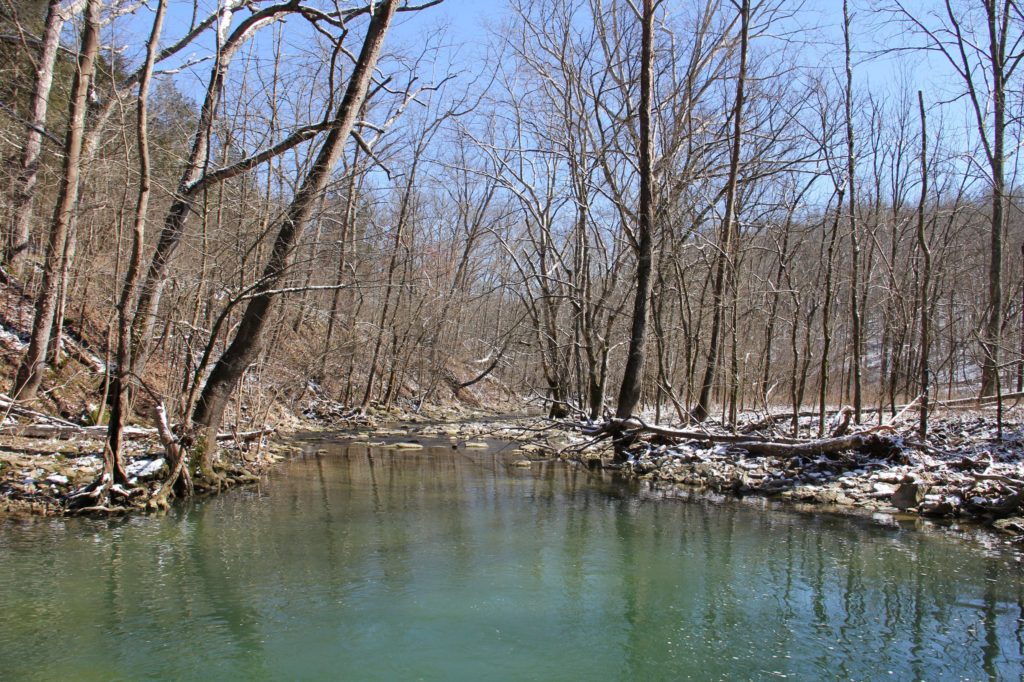By Jody Thompson, Woods & Waters Land Trust
Care for the land transcends social, political and educational differences.
Throughout my career as a conservation professional, I have worked with many landowners—too many to keep up with, really—over the years. I take pride in that and consider myself fortunate to have worked with so many people who appreciate help expressing care for their land.
Through this, I learned many approach conservation differently. Many landowners want to play an active role in making habitat improvements. Others believe in a more preservationist approach of giving the land rest from human hands. Both approaches have their place, and even though they are different, they are rooted in the same goal of land conservation. Care for the land transcends social, political and educational differences.
Joining the work of Woods & Waters Land Trust now exposes me more to landowners with truly long-term conservation goals—protection in perpetuity.

Photo by Ed Lawrence.
To do this reliably—to ensure perpetuity of the forests and other lands that support our waters, wildlife and conservation lifestyles—private land protection must include legal protection, such as with a conservation easement. Whereas we want to believe our natural lands will always remain natural, it’s hard to ensure this. Land is sold every day for various reasons, and future owners, including our children, may not share our same land values.
Thankfully, a permanent conservation easement remains with the land and sets forth the allowed uses of the land. An easement held by Woods & Waters Land Trust, for example, is likely to state that forested areas must always remain forested and that future development, e.g., homes and other buildings, must be restricted to certain areas and well-defined.
Those who have completed the conservation easement process for their land have described a sense of relief and, in some cases, greater closeness than before. Connie May, a co-owner of a Woods & Waters Land Trust conservation easement property in Owen County, Kentucky, said she had an even greater connection to her land after permanent protection was in place.
Betty Beshoar described a duty to the world that she and Mark Roberts accomplished with their easement on the banks of Elkhorn Creek in Franklin County. And Don and Sylvia Coffey told us how their 43-acre easement in Shelby County laid the groundwork for how their land should influence future generations.
These landowners have accomplished something for the forests and wildlife. They’ve provided something for their children that keeps giving and ensured that an aspect of their well-being is protected for the long term.
Reasons for considering a conservation easement vary, and appropriately so. It can be protection for the land itself and the wildlife that call it home. It may be to ensure the land exists so others can learn from it and experience it. For others, protected lands are essential to mitigate the effects of nearby development and habitat loss.
Creating this kind of protection is a big decision. A survey, appraisal (if tax benefits are desired) and assessments can take time. Even with the firm belief that protecting rare plants, forests or family legacy is important, the process requires patience and a trusting partnership with the organization holding the easement. It’s common for misconceptions, like needing large acreage, having rare species present and the belief that they’re sharing ownership, to arise.
The first step to entering into a conservation easement is simply a desire to see natural lands remain natural. The second is the willingness to work with an organization dedicated to helping conserve the lands that are integral to our lives. Organizations like Woods & Waters Land Trust exist to help landowners through this process.
Land is more than an object to be analyzed and shaped. It’s personal, emotional, a home. The spring wildflowers, the trees, the rabbits, deer and songbirds are members of an inner community that together make up the land.
Protecting these places satisfies a visceral need that we have as part of the natural system. Because even with all the rapid, intense disturbance that occurs when humans expand, explore and live life, we are from the natural world. Conserving these natural places is essential to who we are and where we, as people, come from.
I’ve learned from getting to know landowners and listening to their stories that they understand they are part of something bigger than themselves. They’re playing the long game. And that’s a game I’m glad to have grown into.
It’s a beautiful experience to stand alone on a snow-covered streambank. It’s exciting to plan a new habitat improvement and know you’re shaping a better future for a natural space. It’s inspiring to walk in a wood that’s been cared for. But there’s a greater sense of peace on a land that is protected forever.
Article adapted from “Reflection on Land Conservation,” published at WoodsAndWatersTrust.org.
Jody Thompson is the Executive Director of Woods and Waters Land Trust, a non-profit organization that protects forests and streams in the lower Kentucky River watershed through conservation easements, education and encouraging sustainable land stewardship.
